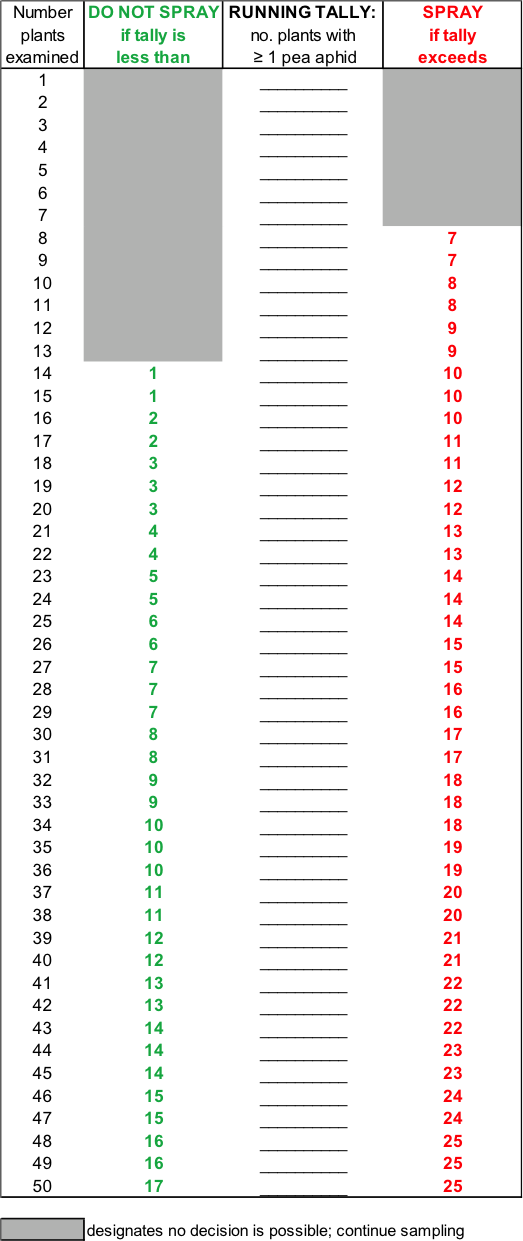The Binomial Sequential Sampling Plan for pea aphids on dry peas is designed to quickly designate a pea aphid infestation as economic or non-economic.
Directions for Digital Calculator
- Several locations (optimally 4 or more) should be chosen by the operator along the margins and center of the field for ideal precision.
- The operator should select a random start point and begin the tally, visually scoring the first plant as either "No Aphids" (un-infested) or "Some Aphids" (infested). Record this observation in the table below for Plant #1. The next plant should be several steps away and as random as possible. Record the absence or presence of aphids for each subsequent plant observed.
- At least 8 plants (often more) must be sampled before a recommendation can be made.
- Continue sampling as needed to reach a recommendation.
Digital Calculator
Analysis & Recommendation
Plants counted:
Plants infested:
Aphid density: %
Directions for Paper Calculator
- Print the Aphid Sampling Tally Form and carry it with you into the field. A thumbnail of the form is shown below.
- Several locations (optimally 4 or more) should be chosen along the margins and center of the field for ideal precision.
- Select a random start point and begin the tally, visually scoring the first plant as either 0 (un-infested) or 1 (infested). The next plant should be several steps away and as random as possible. As you record the plants as infested (1) or un-infested (0) the tally should be ACCUMULATIVE (i.e., if plant 1 is infested = 1 on tally, if plant 2 is infested = 2, if plant 3 is infested = 3, if plant 4 is not infested = 3).
- If the Running Tally section is LESS THAN the left column then the infestation is designated as Non-Economic and thus an insecticide application is not needed. If the Running Tally section is MORE THAN the right column then the infestation is designated as Economic and thus an insecticide application is needed.
- Decisions cannot be made if the left or right columns are filled with grey, the operator should keep sampling until a decision is made.
Paper Calculator
Special thanks to everybody involved in creating this calculator: Sanford Eigenbrode, Ed Bechinski, Ying Wu, Damon Husebye, Brad Stokes, Sunil Paudel and Todd Young.
If you encounter a problem or an error in this calculator, please contact Sanford Eigenbrode.

